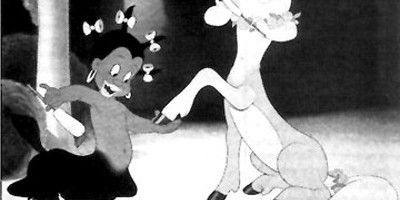
As [writer Dalton] Reymond and [writer Maurice] Rapf finished the screenplay [for what would become the 1946 film Song of the South] late that summer and the studio announced the project, a problem arose: members of the black community protested that any film version of the Uncle Remus stories was bound to portray black Americans in a servile and negative way. A “vicious piece of hocus pocus,” one group called it. Walt Disney was no racist. He never, either publicly or privately, made disparaging remarks about blacks or asserted white superiority. Like most white Americans of his generation, however, he was racially insensitive. At a story meeting he had referred to the dwarfs piling on top of one another in Snow White as a “nigger pile,” and in casting Song of the South he noted a “swell little picaninny [sic]” he had found. Like most Hollywood producers, he had also engaged in racial stereotyping, from a blackbird in the short Who Killed Cock Robin? who speaks in a thick drawl and blanches white when frightened, to the hipster crows in Dumbo, though the case has been made that the crows were sympathetic to Dumbo precisely because they understood what it was like to be ostracized themselves. Worse, in the “Pastorale” sequence of Fantasia, Walt enthused over the idea of a little black centaurette with a watermelon who is terrified when Pegasus gallops after her. “She sees him and Jesus! She goes like hell,” Walt said at a story meeting. “There would be a lot of laughs and it would give a definite lift to the whole thing.”
– From Walt Disney: The Triumph of the American Imagination by Neal Gabler
from Dumbo (1941)
from Fantasia (1940): scene 1
from Fantasia (1940): scene 2


1 response so far ↓
1 Dave // May 15, 2017 at 11:16 PM
‘At a story meeting he had referred to the dwarfs piling on top of one another in Snow White as a “nigger pile,”’
I counted 4 such piles in the film:
1 involved ganging up on Sneezy
1 ” ” Grumpy
2 ” ” Dopey
Leave a Comment